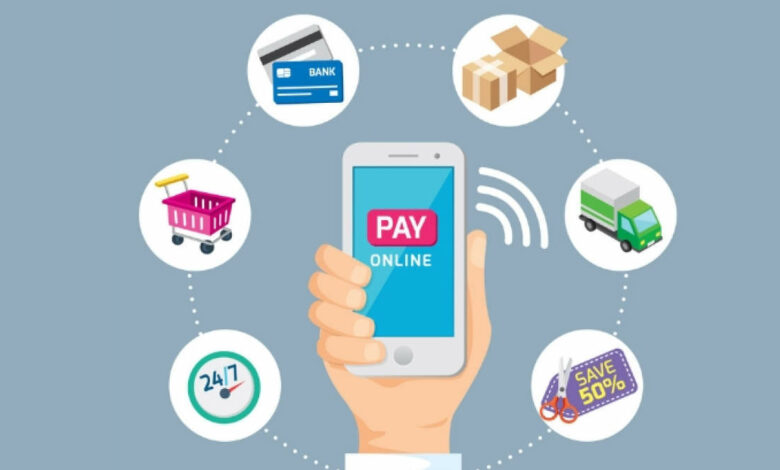AUTHOR : SELENA GIL
DATE : 15/12/2023
Introduction
In today’s digital age, the use of payment gateways has become integral to conducting financial transactions securely and efficiently. These gateways serve as the technological intermediary between merchants and customers, enabling the seamless transfer of funds. In India, the evolution of payment gateways has seen remarkable growth, particularly in the realm of mobile payment apps.
Evolution of Payment Gateways in India
India’s journey with payment gateways traces back to the early 2000s, when the concept began gaining traction. The subsequent years witnessed a surge in technological advance and the coming of various mobile payment apps, transforming the landscape of financial transactions across the country.
Popular Mobile Payment Apps
Security Measures in Payment Gateways
Today, India boasts a plethora of mobile payment apps, each offering unique features and services. Apps like Paytm, Google Pay, Phone Pe, and others have gained widespread popularity due to their friendly interfaces and diverse functionalities. Security remains a paramount concern for payment gateways. Robust encryption techniques and stringent authentication processes have been enacted to safeguard sensitive financial information, ensuring secure transactions.

Regulatory Framework
The Indian government has introduced regulatory frameworks and compliance standards to oversee the operations of payment gateways. These regulations aim to foster trust, lucidity, and accountability within the industry.
Integration of Payment Gateways
Challenges and Solutions
From a business perspective, integrating payment[1] gateways seamlessly is crucial. Merchants and businesses must consider the user experience while ensuring smooth and hassle-free transactions for their customers. However, challenges persist, including security concerns and accessibility issues. Addressing these challenges demands inventive solutions and collaborative efforts among stakeholders to ensure their uniqueness and effectiveness.
Future Trends
Impact on the Indian Economy
Looking ahead, the future of Payment Ecosystem Explained[2] in India appears promising. Innovations such as biometric authentication, AI-driven fraud detection, and blockchain technology are poised to revolutionize the industry. The impact of mobile payment apps extends beyond ease. They play a pivotal role in financial inclusion and have significant implications for the overall economy.
Consumer Behavior and Preferences
Case Studies
Understanding consumer behavior and preferences is crucial to shaping the evolution of these apps. Factors influencing app choice include ease of use, security features, and rewards programs. Several successful case studies highlight the effectiveness of mobile Payment system[3] apps in various sectors, offering valuable insights into their implementation and adoption.
Advantages and Disadvantages
Global Comparison
While mobile payment apps offer unparalleled convenience, they also come with limitations. Understanding both the advantages and drawbacks is essential for users and businesses alike. Online Payment Gateway[4] Comparing India’s with international practices provides a comprehensive view of its strengths and areas for improvement. Current statistics reveal impressive adoption rates and a market spike, indicating the widespread acceptance and usage of mobile payment apps in India.
Security Measures in Payment Gateways

Security forms the backbone of any payment gateway. In India, these gateways implement state-of-the-art encryption techniques like SSL (Secure Socket Layer) and two-factor authentication to ensure that sensitive financial information remains safeguarded during transactions. These robust security measures instill confidence in users, reassuring them that their data is protected.
Regulatory Framework
To maintain lucidity and trust within the payment industry[5], the Indian government has introduced severe regulations. Regulatory bodies like the Reserve Bank of India (RBI) monitor and regulate the operations of payment gateways. Compliance standards and guidelines are set to ensure that these platforms adhere to ethical practices, protecting the interests of both consumers and businesses.
Integration of Payment Gateways
From the merchant’s perspective, integrating payment gateways seamlessly into their platforms is pivotal. Ensuring a friendly and intuitive checkout process is crucial for enhancing customer experience . Simplicity and security play significant roles in influencing user trust and satisfaction.
Challenges and Solutions
Despite the advancements, challenges persist. Security concerns regarding data breaches and cyber threats remain a focal point. Additionally, ensuring accessibility for all sections of society, including those with limited access to technology, is an ongoing challenge that requires innovative solutions for greater inclusivity.

Future Trends
The landscape of payment gateways in India is constantly evolving. The future holds exciting prospects with the integration of advanced technologies like artificial intelligence and blockchain. These innovations aim to enhance security, smooth transactions, and further elevate the user experience.
Conclusion
The evolution of payment gateways and mobile payment apps in India represents a significant leap towards a cashless economy. With robust security measures, regulatory frameworks, and constant innovation, these platforms continue to reshape the country’s financial landscape, fostering inclusivity and convenience.
FAQs
- Are mobile payment apps secure for transactions?
- How do payment gateways contribute to financial inclusion?
- Which mobile payment app holds the highest market share in India?
- What are the future trends expected in payment gateways?
- How do payment gateways benefit businesses and merchants?




